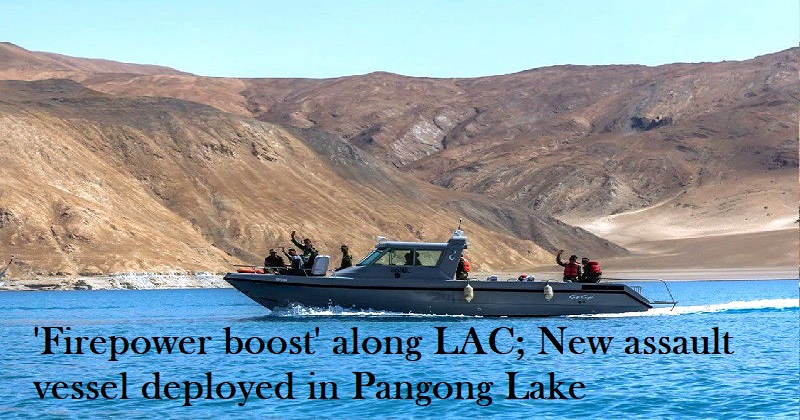
The Indian Army has deployed a new assault vessel in Pangong Lake along the Line of Actual Control (LAC) with China, significantly increasing India’s military capabilities in Ladakh. The Landing Craft Assault (LCA) will improve operations along the LAC.
The Landing Craft Assault is much more versatile and has overcome the limitations of launch, speed, and capacity. The LCA has improved its ability to operate across water obstacles in Eastern Ladakh. Aquarius Ship Yard Limited, Goa, developed the LCA in-house, according to officials. Not only that, but several other high-profile platforms have been added to enhance the capabilities along the LAC. These platforms are critical for Indian Army deployment.
Protected Mobility Vehicle for Infantry (IPMV)
A large number of infantry soldiers are stationed along the northern borders, with no protection and limited mobility. This has been greatly alleviated by the introduction of two types of high mobility vehicles. The first is Tata Advance Systems Limited’s Infantry Protected Mobility Vehicle, which is similar to a mini BMP. This vehicle provides enhanced protection to the infantry soldiers inside it in addition to high mobility. The Infantry Protected Mobility Vehicle is an armoured personnel carrier that can be used for quick patrols and troop induction for missions such as reconnaissance and offensive operations.
Quick-Response Fighting Vehicle
The Quick Reaction Fighting Vehicle, along with the Infantry Mobility Protected Vehicle, is the second vehicle for improved troop mobility in Eastern Ladakh. It allows for much faster troop deployment and response. Tata Advanced Systems Ltd was contracted to supply the vehicles. These are custom-made vehicles with increased mobility, firepower, and protection. It will aid in the establishment of moral superiority along our northern borders.
Aerial System Mini Remotely Piloted (RPAS)
Aside from Air Force aircraft and Heron UAVs, which have tactical limitations, the Indian Army has limited capability for surveillance, detection, and reconnaissance at the infantry battalion and mechanised unit levels. The RPAS has given the battalion commander all three capabilities, and the Indian Army is now much better than our adversary at acquiring real-time information at the tactical level.
Siachen Solar Energy Project
The Siachen Glacier is one of the country’s most challenging terrain and operational sectors. The area’s total power requirement to operate various equipment was only met by a captive generator supply. The use of kerosene oil and other conventional energy sources was prevalent. A solar photovoltaic plant has now been installed to meet the country’s overall energy needs while also reducing reliance on fossil fuels. Partapur’s power supply has been significantly improved by the solar plant. The captured energy is used for food, security lighting, hospitalisation, and key installations.
Future Infantry Soldier as a System (F-INSAS)
Future infantry soldiers will be outfitted with three primary subsystems. The first subsystem is a modern state-of-the-art assault rifle with day and night holographic and reflex sights. A thermal imager sight or image intensifier sight will be used depending on the situation. The sights are mounted on the weapon as well as the helmet to provide 360-degree visibility and accuracy in operational conditions. In addition to the primary weapon system, the soldiers will be equipped with a multi-mode hand grenade that was also procured locally, as well as a multi-purpose knife.
In conditions where mine threat is imminent, he will wear mine protective shoes. The protection system is the second subsystem. This provides protection in the form of a specially designed helmet and bulletproof jacket. It will also be equipped with modular pouches and harnesses for carrying grenades, magazines, radio sets, and other operational equipment. The communication and surveillance systems make up the third subsystem. Each soldier will have a hands-free radio, and the section commander will have additional communication and surveillance devices for real-time contact with his team.

Post Your Comments